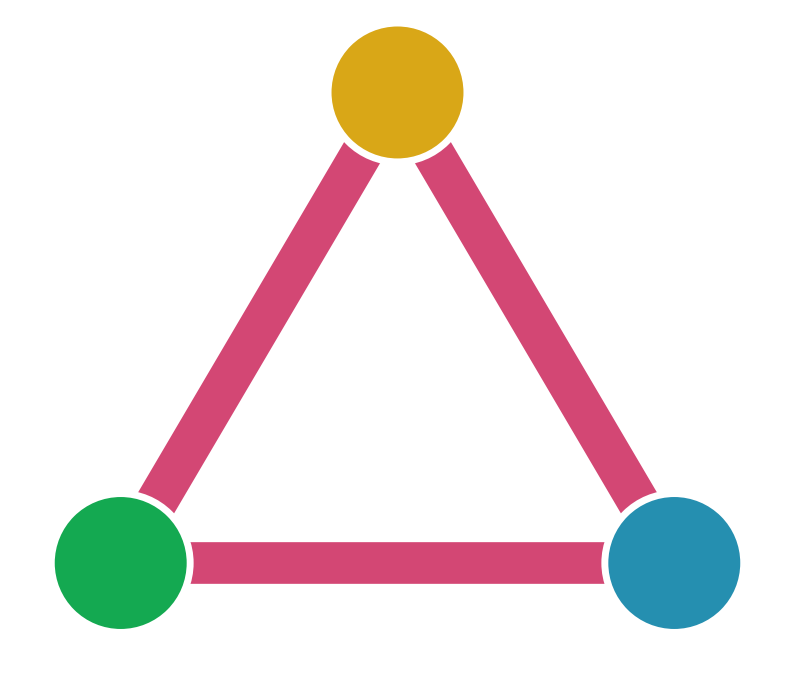Troubleshooting#
Creating and sharing a Minimum Working Example (MWE)#
If you are experiencing problems with PyPSA, please create a MWE and share it when asking for help.
A MWE is a small example that reproduces the problem you are experiencing. It should be as small as possible, but still reproduce the problem. Often, when creating a MWE, you will find the problem yourself, and if not it will be much easier for others to help you.
For details on what a MWE is and how to create one, see this Stack Overflow post.
Library dependency issues#
If you are experiencing problems with PyPSA or with the importing of the libraries on which PyPSA depends, please first check that you are working with the latest versions of all packages.
See upgrading-packages and Upgrading PyPSA.
Consistency check on network#
A consistency check can be performed using the function pypsa.Network.consistency_check().
Problems with power flow convergence#
If your network.pf() is not converging there are two possible reasons:
The problem you have defined is not solvable (e.g. because in reality you would have a voltage collapse)
The problem is solvable, but there are numerical instabilities in the solving algorithm (e.g. Newton-Raphson is known not to converge even for solvable problems; or the flat solution PyPSA uses as an initial guess is too far from the correction solution because of transformer phase-shifts)
There are some steps you can take to distinguish these two cases:
Check the units you have used to define the problem are correct. If your units are out by a factor 1000 (e.g. using kW instead of MW) don’t be surprised if your problem is no longer solvable.
Check with a linear power flow
network.lpf()that all voltage angles differences across branches are less than 40 degrees. You can do this with the following code:
import pandas as pd, numpy as np
now = network.snapshots[0]
angle_diff = pd.Series(network.buses_t.v_ang.loc[now,network.lines.bus0].values -
network.buses_t.v_ang.loc[now,network.lines.bus1].values,
index=network.lines.index)
(angle_diff*180/np.pi).describe()
You can seed the non-linear power flow initial guess with the voltage angles from the linear power flow. This is advisable if you have transformers with phase shifts in the network, which lead to solutions far away from the flat initial guess of all voltage angles being zero. To seed the problem activate the
use_seedswitch:
network.lpf()
network.pf(use_seed=True)
Reduce all power values
p_setandq_setof generators and loads to a fraction, e.g. 10%, solve the load flow and use it as a seed for the power at 20%, iteratively up to 100%.
Problems with optimisation convergence#
If your network.optimize() is not converging here are some suggestions:
Very small non-zero values, for example in
network.generators_t.p_max_pucan confuse the optimiser. Consider e.g. removing values smaller than 0.001 withnumpy.clip.Open source solvers like GLPK and clp struggle with large problems. Consider switching to a commercial solver like Gurobi, CPLEX or Xpress.
Use the interior point or barrier method, and stop it from crossing over to the simplex algorithm once it is close to the solution. This will provide a good approximate solution. The settings for this behaviour in CPLEX and Gurobi can be found in the PyPSA-Eur config.yaml.
Pitfalls/Gotchas#
Some attributes are generated dynamically and are therefore only copies. If you change data in them, this will NOT update the original data. They are all defined as functions to make this clear.
For example:
network.branches()returns a DataFrame which is a concatenation ofnetwork.linesandnetwork.transformerssub_network.generators()returns a DataFrame consisting of generators insub_network
Reporting bugs/issues#
Instead, please post questions to the mailing list. This is preferred over contacting the developers directly.
If you found a bug, raise it as an issue on the PyPSA Github Issues page or prepare a pull request.
